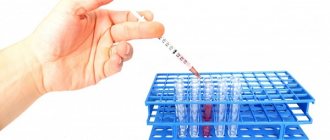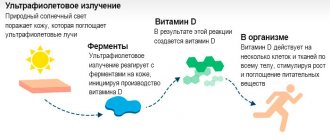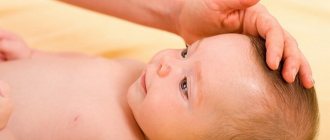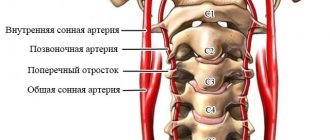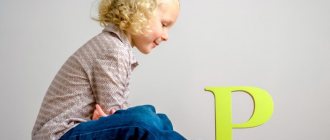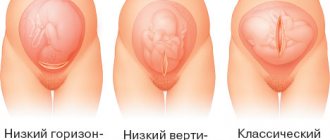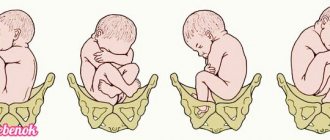Benefits of classes
Fitball is a large inflatable ball made of dense elastic material. It is intended for exercises aimed at improving the health of the body of a person of any age. The diameter of the ball is usually 50-95 cm. Gymnastics on the ball provides load on most muscles, corrects posture, and increases the flexibility of the body. You can simply sit on the ball, springing, this will help reduce the load on the spine. You can lie on your back and roll forward and backward. This exercise will relax your back muscles, help stretch your spine, and improve blood circulation.
Many gymnastic complexes have been developed, starting from infancy and older. Physical exercises on a fitball are recommended for both healthy children and those with neurological and orthopedic pathologies.
Along with massage, exercises on the ball are good for torticollis, increased muscle tone, joint dysplasia and other diseases. However, in such cases, a special instructor is required for classes, or parents need to take a training course.
Gymnastics on a fitball gives the following positive results:
- Reduces increased muscle tone, which is very common in newborns
- Strengthens the child's muscles and skeleton. During gymnastics on the ball, all muscle groups of the baby develop and strengthen.
Strengthening the back muscle corset will make the spine strong and flexible, which will help ensure the proper development of the child’s nervous system;
- Forms correct posture and abdominal muscles;
- Promotes the development of the vestibular apparatus, which is very important for children in the first year of life;
- Improves coordination of movements;
- Reduces gas formation and colic, performing the function of a light massage that promotes digestion;
- Calms the child.
Rocking movements on the ball relax and calm the child, some even rock and fall asleep.
The vibration of the ball serves as a kind of physiotherapy, relieves pain and tension, stimulates the functioning of internal organs.
Possible contraindications
Fitball has no categorical contraindications. Gymnastics on a Swiss ball is useful for absolutely all children. There are just a few things parents need to consider when deciding to start classes:
- Has the child matured physically, has the umbilical wound healed? There's no need to rush. Do not put your baby on a fitball immediately after being discharged from the hospital. Wait 3-4 weeks.
- Which set of exercises to choose. Focus on the child’s age and level of development. For babies who show no signs of wanting to sit, walk, or stand, a set of exercises for one-year-old and six-month-old babies is contraindicated. The body has not yet matured.
- Why do you need fitball classes? If the purpose of the classes is general strengthening, then choose a set of exercises yourself, improvise, involve older children and preschoolers 5-6 years old in the games. If classes are necessary as a medical procedure, it is better to contact specialists (neurologists, pediatricians, orthopedists). To treat developmental defects of the musculoskeletal system and neurological ailments, an individual course of gymnastics will be required.
The benefits of fitball for newborns are undeniable. Pediatricians say that active exercise on the ball improves the baby’s sleep and appetite, which means the mother will be positive.
IMPORTANT ! *when copying article materials, be sure to indicate an active link to the original source: https://razvitie-vospitanie.ru/uhod/zanyatiya_s_rebenkom_na_fitbole.html
If you liked the article, please like it and leave your comment below. Your opinion is important to us !
Choosing a fitball
To make exercise on a fitball successful and fun, you need to choose the right ball. First of all, let's decide on the diameter of the ball.
If you plan to use the ball only for activities with the child, then you can choose a diameter of 50-60 cm. However, it is more preferable to purchase a large fitball with a diameter of 75-80 cm. Then the whole family can use it together with the baby.
Pay attention to the material from which the projectile is made. The fitball should have a smooth, but not slippery surface. It should be elastic. With slight pressure with your hand, it pushes off the ball, springs, and does not easily fall through or have strong resistance. If you are in doubt about the thickness of the material, you can pinch the ball. If a large number of folds and wrinkles form, we can conclude that the quality of the product is low.
An important quality is the strength of the material from which the ball is made. The elasticity of the ball and its functionality depend on its strength. If the fitball is made of high-quality durable rubber, then it can withstand a load of 300 kg.
An important characteristic of the ball is the presence of ABS markings. It means that the fitball has an anti-explosion function. Such shells are the safest for babies.
A high-quality ball does not have noticeable seams, burrs, or scars, it has good antistatic properties, and dust and debris do not stick to it. A good fitball is made of hypoallergenic material, without any harmful chemical odor. It is always warm and pleasant to the touch. The nipple of the ball should not protrude outward, interfering with its use.
Cheap balls are often slippery and sticky, do not spring well, have an unpleasant odor, and have visible joints and roughness. This will make it difficult to use them. Don't skimp on quality. It is better to immediately purchase a large, high-quality ball that will serve all family members for a long time.
Which ball is better to choose
When buying a fitball for exercising with a baby, parents need to pay attention to the following parameters:
- Ball size.
The optimal diameter of a gymnastic apparatus for newborns does not exceed 45 cm. For children under one year old, an apparatus with a circumference of 75 cm is suitable for adults. - Elasticity. The surface should be springy and hard. Check this parameter in the store by pinching the projectile. If the rubber quickly returned to its original position, then the product is of high quality and is suitable for training with infants.
- Material. Fitballs are made from rubber, caoutchouc, and latex. For infants, choose an odorless ball; the material does not really matter.
- Surface. The smooth version is suitable for babies. Children after one year - with thorns, horns, pimples. Also pay attention to the seams and valve. Protruding elements can injure a newborn, so the inflation valve should be hidden inside, and the seams should be barely noticeable.
- Anti-explosion system. If the projectile is marked ABS, then it will withstand a weight of up to 300 kg, will not explode under the load, but may deflate if it is exceeded.
- Color. For infants, choose exercise equipment in pastel colors. Poisonous greens, garish oranges and reds are most often cheap knockoffs.
- Manufacturer. Choose Italian, German, American balls. They will last more than 10 years.
- Equipment. A good set must include an inflator.
Important! Buy a fitball at a sports or children's store. The likelihood of purchasing a quality product in branded retail chains is much higher.
Gymnastics rules
It is recommended to start exercising on a fitball approximately 1 month after birth. You can start at 2-3 weeks. However, the set of exercises for children up to 6 months and after is different. These differences are associated with the development of motor skills, which the baby gradually masters every month. Before starting a set of exercises for a baby on a fitball, parents should familiarize themselves with the rules of gymnastics:
- It is advisable to conduct classes in the morning or afternoon, when the baby is most active and cheerful;
- Do not do gymnastics for infants immediately after feeding. Let at least an hour pass after eating;
- The first lesson is introductory and lasts 3-5 minutes. Both adults and children need to get used to the ball.
You can gradually increase the time. Classes for 2-month-old infants are sufficient to be carried out for 6-8 minutes;
- When working with a child for the first time, you need to hold him well, the amplitude of swinging the ball is minimal.
The simplest exercises are chosen. Over time, when parents master the technique of performing such gymnastics and the child grows up a little, the set of exercises can be complicated;
- Infants should not be held by the feet or hands when performing gymnastics.
These joints are not yet ready for stress;
- You need to hold the baby firmly by the ankles, forearms, back, chest, and stomach.
Don't get distracted in class. Do not leave the child unattended;
- During gymnastics, the baby should wear a minimum of clothing so that it does not interfere;
- Exercises on a fitball should only be done when the baby is healthy and in a good mood.
If the baby cries or shows dissatisfaction, then it is better to stop classes. Gymnastics should bring only positive emotions. During the child's illness, classes are also stopped;
- The classes will be more successful if, while doing the exercises, you talk affectionately to the baby, tell him funny rhymes, sing songs, and you can turn on music that he likes.
At what age to start
You can start exercising your child on a fitball at any age. The earliest is considered to be 3 weeks after birth.
By this time, the umbilical wound has healed, the mother recognizes the baby’s temperament and can confidently hold him. Parents will feel the benefits of swinging on a large ball almost immediately. The baby will calm down and have fun.
Interesting! Dr. Komarovsky speaks out against rocking of newborn babies. He believes that this procedure only brings harm. But the fitball is treated very positively, if you do not use the gymnastic ball as a saddle for a tired mother who is trying hard to put her child to sleep.
Exercises
There are different sets of exercises for babies depending on their age. You can start from 2-3 weeks, but it is better from 1 month, when the child can at least hold his head a little.
The first lesson should be short. Both parent and child need to get comfortable. An adult sits on a chair, places the ball in front of him, holding it with his feet. If the baby is naked, then cover the shell with a diaper. Gently lower the baby onto the center of the ball. Holding the child by the back with both hands, gently swing the ball slightly towards and away from you, to the left and to the right.
Enough for the first time. Then you can gradually add exercises and increase the time of training.
Exercises for babies 1 – 2 months
- The baby lies with its back on the table.
Place a ball near his legs. Bring it closer to your feet so that your baby can kick and push the ball away. Repeat several times.
- We place the baby on the gymnastic ball on his tummy, his torso, legs and head lie completely on the surface of the ball.
Hold the child by the waist and rock the ball back and forth a little.
- "Spring."
The baby lies on a fitball with his tummy down. Hold it by the back with one hand and the legs with the other. It is necessary to perform a “fork” grab. One ankle is grabbed between the index and thumb, the other - between the middle and index fingers. Lightly press on the child's back and release so that the ball springs up and down.
- The starting position too.
We hold the child by the waist. Swing the ball left - right, forward - back, then in a circular motion with a small amplitude. Don’t forget - everything must be done smoothly; babies should not be pumped abruptly. During gymnastics, be sure to monitor your baby’s mood.
Examples of exercises for infants - in the video:
Exercises at 3-4 months
To those already mastered previously, we add new tasks, more complex:
- We place the child with his back on the ball.
Hold by the shins. Bend the baby's legs at the knees and press them to the chest. Rolling the fitball back, straighten the baby's legs. Return to starting position.
- Place the ball on a flat surface (for example, a table).
Bring the child face forward to the ball. The baby's arms are extended, we hold him by the body and tilt him so that he rests on the ball and pushes it with his arms.
- We place the child on the fitball with his back.
Holding the baby by the tummy or chest with one hand, and the legs with the other, we swing the ball forward - backward, left - right.
- The child's position is the same.
Hold your chest with one hand and your hips with the other. Pressing lightly, we spring onto the ball.
More options for ball gymnastics for this age:
Exercises at 5-6 months
We complicate the complex with new exercises.
- Place the child's stomach on the ball.
Holding the baby by the hips, we swing the ball so that the baby reaches the floor and back with outstretched arms.
- Place the baby on the ball with his feet, holding it under his arms.
The back is turned towards the adult. Roll the ball forward and place the child on it. We roll back, lifting the baby to his feet.
- Exercise "Clock".
Place the baby's back on the ball. We hold it on both sides by the body, move the ball in a circle, first in one direction, then in the other.
Charging on a ball as a type of massage
Fitball exercises combine gymnastics and massage. The vibrations that the ball transmits to the baby have a positive effect on its internal organs and stimulate their work. They also have a mild analgesic and relaxing effect.
There are special massage balls. Unlike ordinary ones, their surface is covered with small pimples.
They increase the massage effect. But at first it is better to use smooth balls.

